A beginner’s guide to hoof trimming: How to keep your cattle, sheep, and goats limp-free
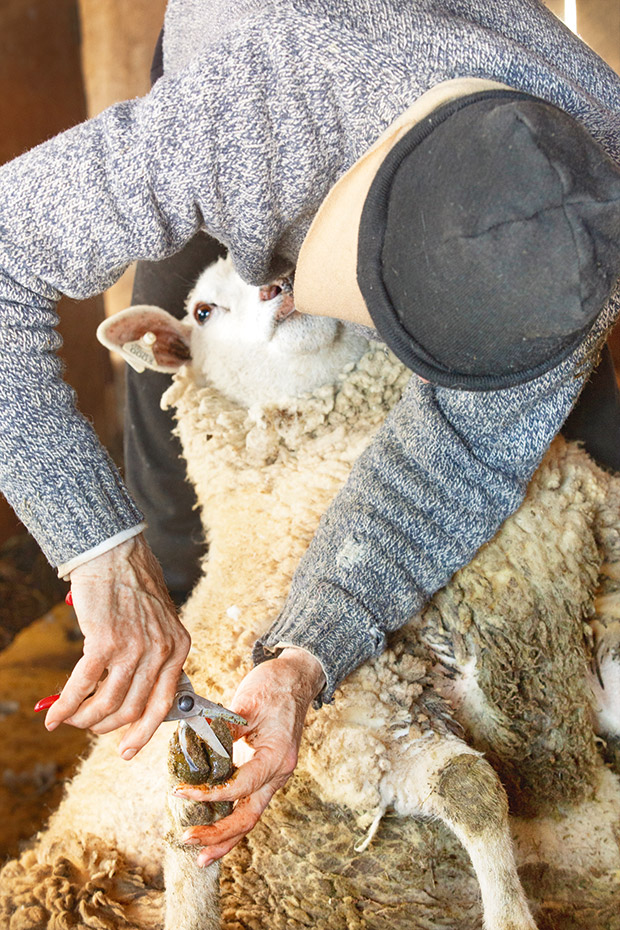
Limping cattle, sheep, and goats are a common winter sight, but there are ways to fix and prevent it.
Words: Dr Sarah Clews, BVSc
How to position the animal
Sheep: flip the animal, so it’s sitting on its rump, with its head between your knees. Most sheep tend to relax while in this position and are easier to handle.
Goats: they prefer all four feet firmly on the ground. It’s easiest to pick up each foot as you would for a horse. Put a collar around the animal’s neck and tie it on a very short rope to a solid post to keep it still.
1. Firmly grasp the foot and remove any mud and stones, so you get a clear view of the hoof.
2. Use sharp hoof shears to trim excessively long toes. Trim away excess hoof wall, until it meets the sole.
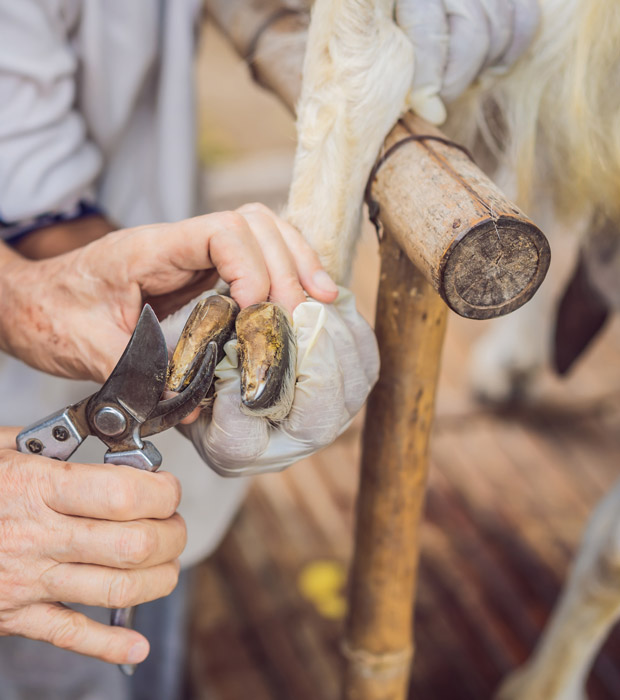
3. Aim to level the two toes as much as possible. It’s common for the outer heel to grow longer than the inner heel in overgrown feet, causing the animal leg/s to be at an abnormal angle.
If the difference is great, you’ll need to correct it in stages over several trims (or more) to avoid hitting sensitive tissue. I recommend the guidance of a vet in this situation.
4. Check between the toes for any sign of a sticky white (sometimes pink-red) film known as foot scald.
It’s a type of dermatitis caused by bacteria and is common in wet weather. Spray with an antiseptic or soak hooves in a 10% solution of zinc sulphate and water.
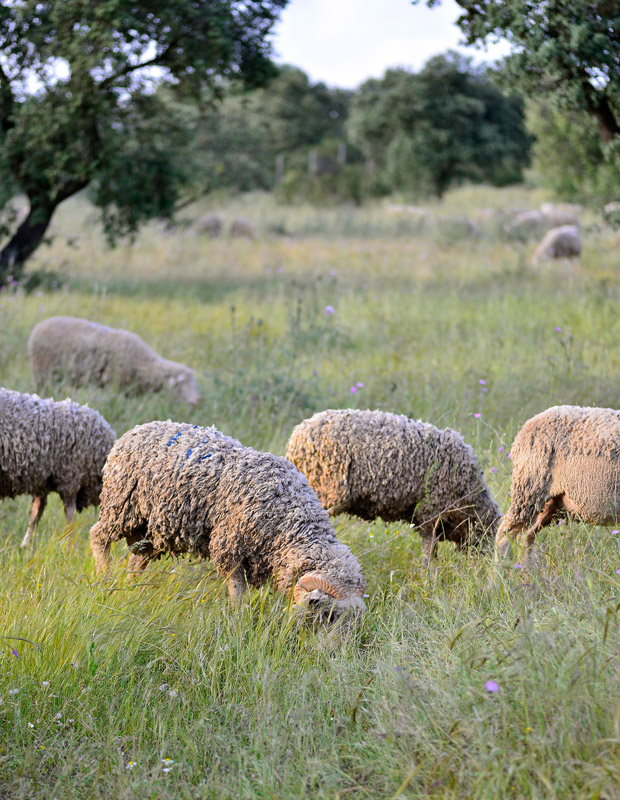
Common conditions that require therapeutic trimming
SHELLY HOOF (Also known as White Line Disease)
This is where the hoof wall separates from the sole, creating a ‘pocket’ (see below). While the separation doesn’t cause lameness, dirt, manure, and stones become packed up in the pocket as the animal walks, which can cause discomfort and infection.
What to do: Trim the pockets away, in a U or V formation. This prevents dirt from packing into the pocket, but still allows the hoof to bear weight.
LAMINITIS
This condition requires veterinary attention. It’s mostly seen in goats, often fat ones. It’s most commonly caused by a diet too rich in carbohydrates, eg grain, lush spring grass. Over time, the condition causes abnormal growth and ‘platform soles’ or tall, rock-hard soles.
What to do: Talk to your vet about a treatment plan. The vet will need to trim the hooves back every few weeks over time, leaving the toe slightly longer and the heals slightly shorter than normal.
In long-standing cases, it may be impossible to regain perfect conformation to the foot. The animal may require x-rays to assess where the pedal bones lie beneath the surface. If the damage is too great, the animal will need to be euthanised.

FOOTROT
This is a common infection of the hoof caused by bacteria that thrive in damp soil. Oddly, the bacteria stimulate the growth of the hoof wall, so you’ll see sudden overgrowth and severe lameness.
An animal may hold its leg in the air, or not want to walk if the infection is in more than one hoof. Sometimes, you’ll see a grey-black, foul-smelling pasty scum.
What to do: Talk to your vet on how to treat this painful condition and how to manage recurring infections in your herd. Trimming the hooves won’t cure or prevent footrot. Over-trimming healthy hooves predisposes them to infection; trimming during an infection can slow healing.
TIPS
– Only trim any severely overgrown or overturned hoof wall, to expose the bacteria to air.
– Be conservative and leave perfecting the shape of the hoof until the infection has healed.
– Trimmings are highly infectious – dispose of them immediately and disinfect trimming shears between animals.
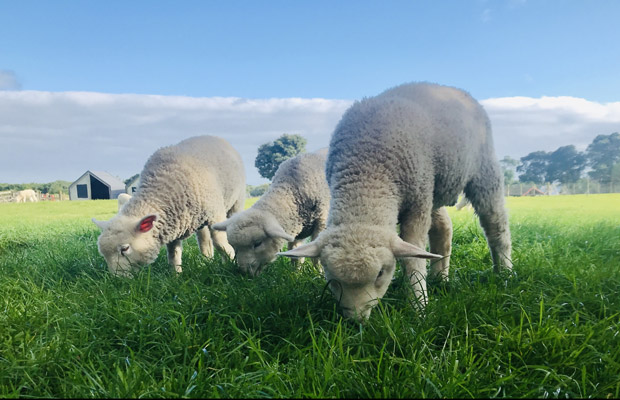
WEAK PASTERNS
This is a weakness of the tendons that run down the back of the foot, resulting in a dropped fetlock. It can be a genetic fault and may manifest in goats as young as six months old.
It’s also caused by trauma to the hoof, months, or years of poor trimming, and can also affect older does after multiple pregnancies. Over time, the goat grows long toes and rocks back on their heels, causing bruising and traumatic wounds.
What to do: You can’t solve this with one trim, and you may require a vet visit to get on the right track. It will take time to correct the length of the toes and achieve parallel lines between the sole and coronary band.
The heel may wear abnormally, so regular trimming is required. In severe cases, your vet may use splints or shoes to artificially extend the heel to help the healing process.
WHAT A WELL-TRIMMED HOOF LOOKS LIKE
If you look at a sheep or goat hoof side-on, the goal is to achieve a parallel line (yellow) between the bottom of the hoof and the coronary band (when hoof wall meets fluff and skin), and a parallel line between the front and the back (green). It can take several trims over time to correct overgrown and poorly maintained hooves.
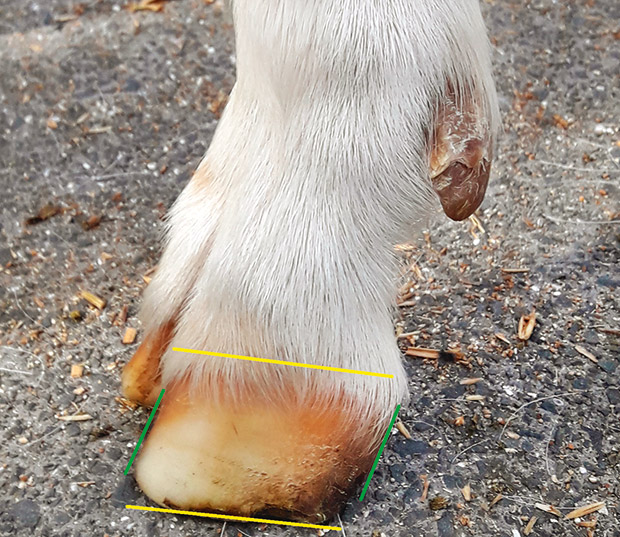
WHAT IS A ‘STRAWBERRY’?
A toe granuloma, colloquially known as a ‘strawberry’, is a round, bright-red, wet-looking spongey tissue that appears in the hoof sole. It’s painful, quick to bleed, and very tricky to get rid of.
Goats will require veterinary care, including surgery to remove the tissue, protection for the hoof, antibiotics, painkillers, and ongoing treatment.
DON’T CUT INTO PINK-RED TISSUE
Sometimes pink spots from bleeding caused by laminitis (pictured below) or sole bruises will be visible in the hoof wall. But if you see pink in the sole, it means you’re too close to the soft, sensitive hoof tissue.
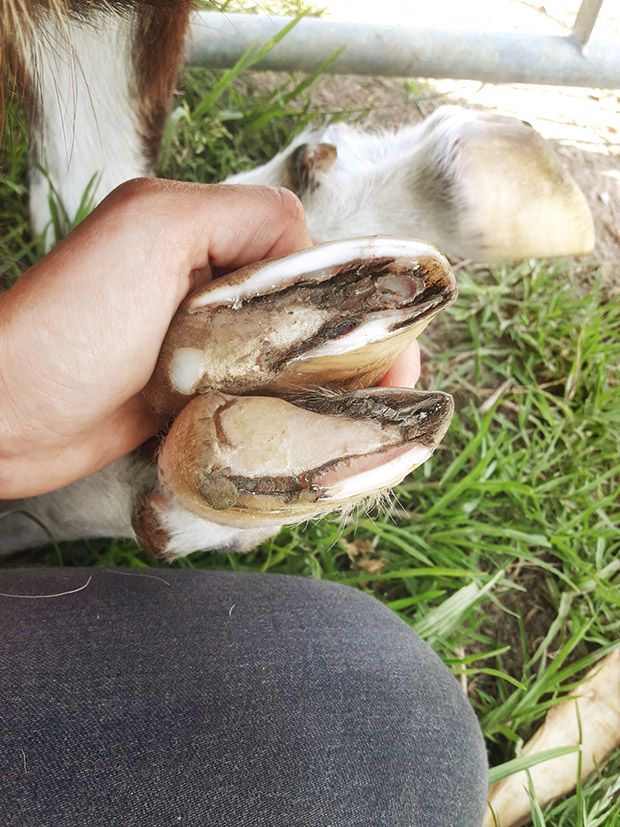
Spray soft, exposed tissue with a tetracycline or disinfectant spray. Keep the hoof dry for 7-10 days to avoid infection.
If you do trim into this tissue, it will bleed (it will feel like a lot!). Use bandaging or something absorbent such as a sanitary napkin on the wound. Hold in place with vet wrap. A vet can place a ‘slipper’ on the hoof to protect exposed tissue from developing into a ‘strawberry’.
Further reading:
This guide from Beef & Lamb UK has excellent images and diagrams of common sheep (and goat) hoof issues. You can also search for ‘reducing lameness for better returns’.
MORE HERE
Love this story? Subscribe now!
 This article first appeared in NZ Lifestyle Block Magazine.
This article first appeared in NZ Lifestyle Block Magazine.
